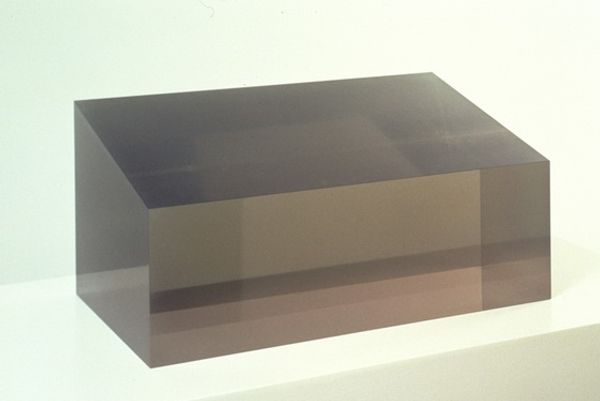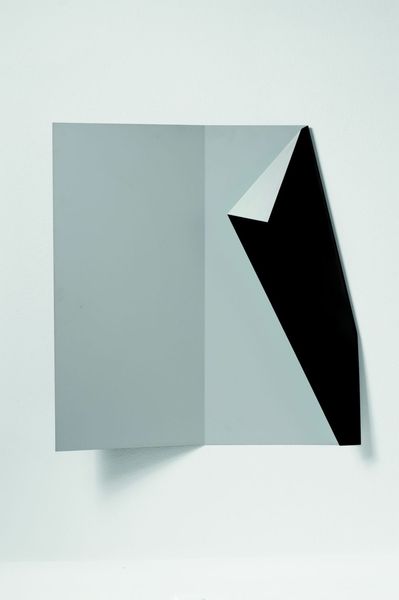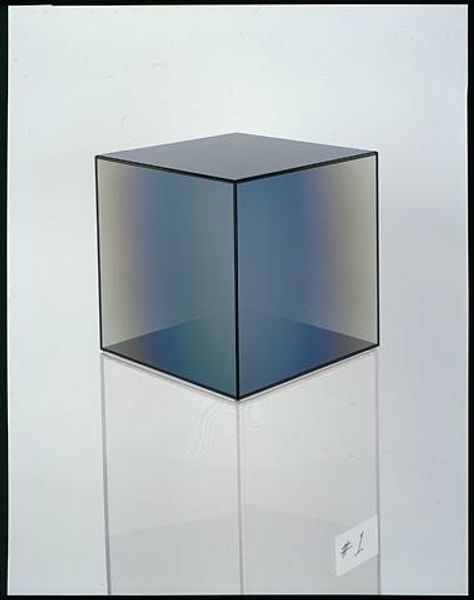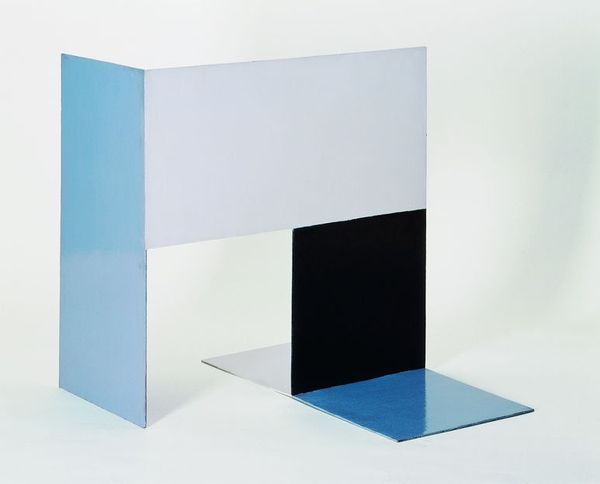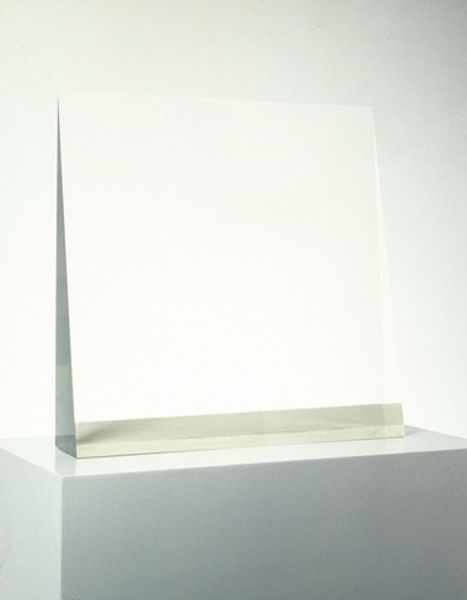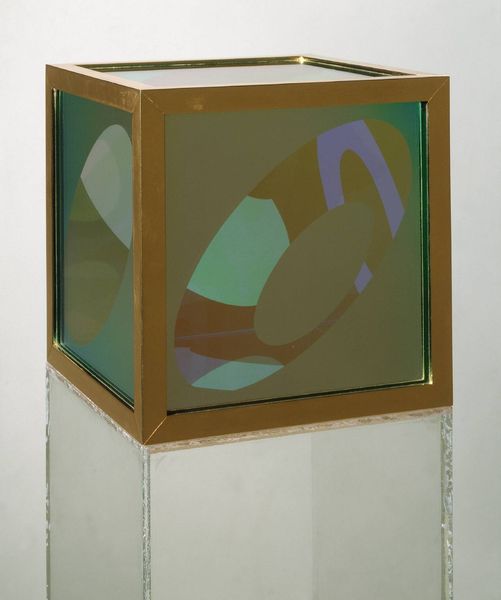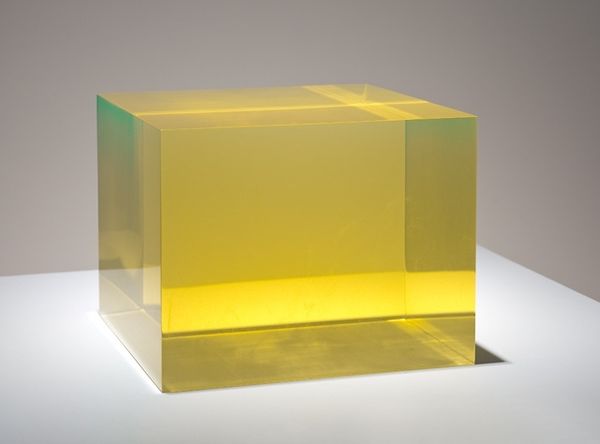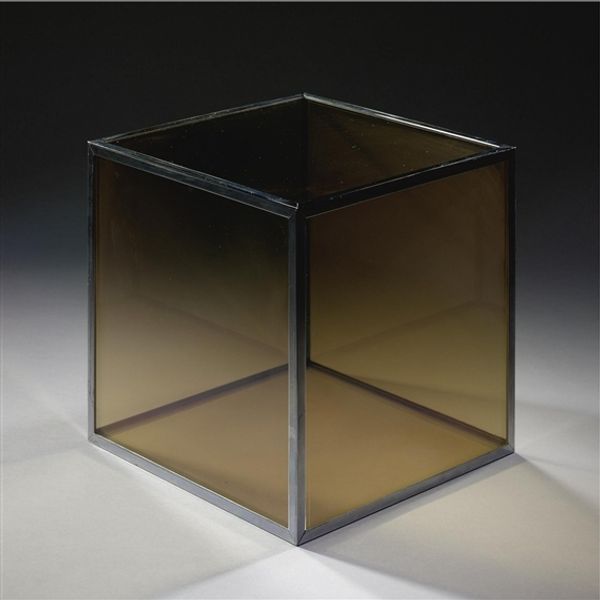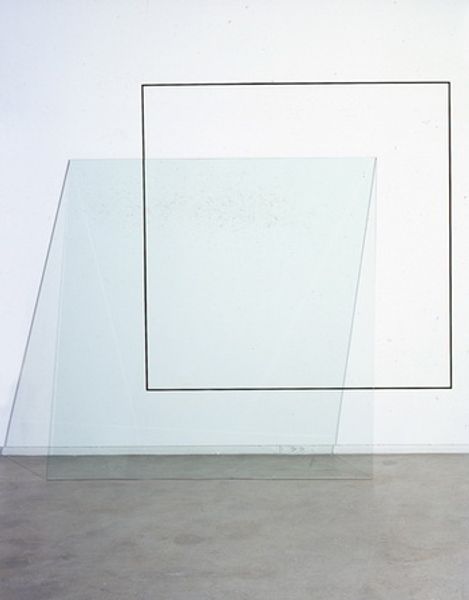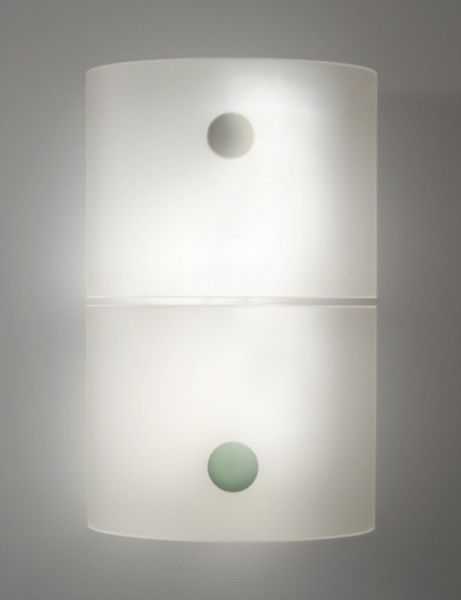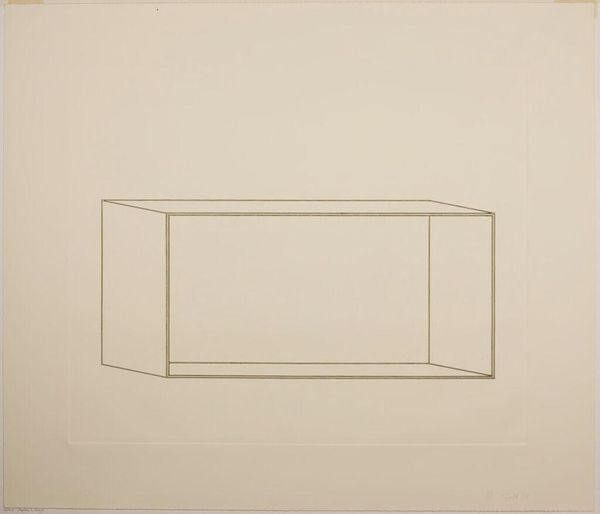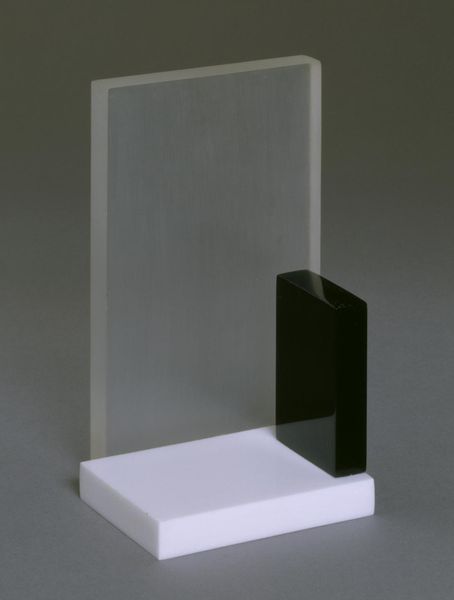
Copyright: Larry Bell,Fair Use
Curator: It's like a visual poem on the nature of space and form. We’re looking at Larry Bell’s "Cube #54" from 2005. It's primarily crafted from glass. What are your immediate impressions? Editor: Cold, precise, but also surprisingly ethereal. It's a cube, but it seems to almost dissolve into the surrounding space. The play of light is captivating. I wonder about the context of minimalism at the time; this isn’t a brash statement. Curator: Absolutely. Bell was deeply invested in exploring the properties of glass itself, challenging its traditional function as a transparent barrier. His process involved coating the glass with thin films to manipulate light and reflection. This approach definitely speaks to the socio-economic circumstances prevalent, with new technologies giving artists new means. Editor: So, not just the end product, but also the methods and industry used. The late modern period was indeed influenced by its materials. But I see more than that. Consider how the art market at this point had embraced minimalist sculpture, particularly that coming from the West Coast; Bell's work becomes part of a system. The cubes existed as desirable, clean, modern pieces of a collection. Curator: True, but doesn’t the interaction of surface and light, and their manufacturing also critique the concept of purity inherent in geometric abstraction? It’s a cube, a very basic form, but the way he treats the material introduces immense complexity. I see how institutions embrace it, but this embraces the industrial, too. Editor: It does. Its simplicity is deceptive. In that sense, perhaps it can be said to represent a tension between high art and functional design. A fine line in a post-industrial culture that blurs boundaries and forces us to reconsider the role of both the art object and the art world, itself. Curator: I see it more as dissolving hierarchies in making; it speaks to how materials and processes contribute to its meaning beyond the final presentation. What's it made of, who is making it, and how? Editor: And to reiterate, Larry Bell's cubes can act as markers of prestige in collections as the late modern and contemporary movements spread. These factors come together for our experience. Thank you for walking me through these interpretations. Curator: My pleasure, thanks for shining a light on other details.
Comments
No comments
Be the first to comment and join the conversation on the ultimate creative platform.
